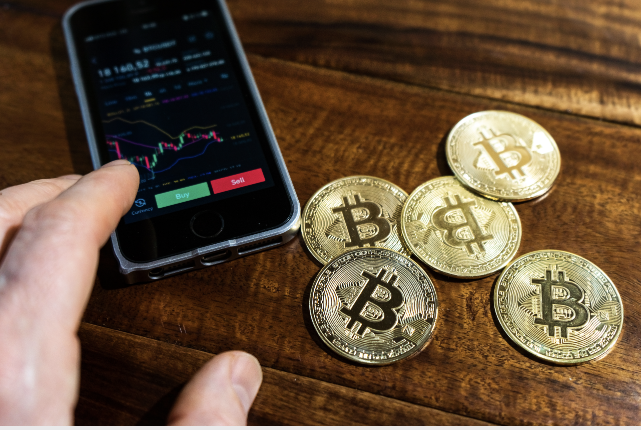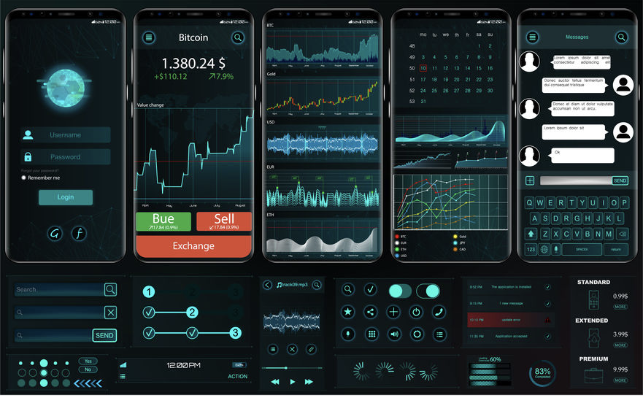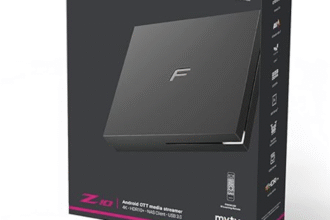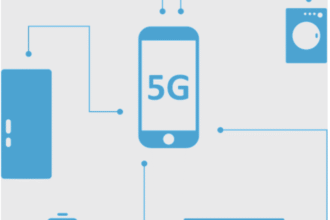Interest in cryptocurrencies has exploded in recent years, and lockdowns have only amplified this phenomenon. Today, acquiring cryptocurrencies is no longer reserved for elite traders, but rather for other, often less experienced, profiles. In 2025, users who want to buy cryptocurrencies are turning to exchange platforms.
Among the market’s must-haves is Binance. Thanks to its wide range of crypto assets and relatively low fees, Binance has quickly become one of of the best cryptocurrency platforms. Taking into account trading volumes, it is the leading cryptocurrency exchange globally. However, the platform faces some criticism, particularly regarding usability.
To give you a complete overview of this solution and help you form an opinion on Binance, we have carried out a detailed analysis of the service.
The 2 best alternatives to Binance in 2025:

What is Binance?
Binance is an online platform specializing in cryptocurrency exchanges. Binance was founded in 2017 in Hong Kong following a fundraising round initiated by founder and CEO Changpeng Zhao. After raising several million dollars in just two weeks, Binance has grown rapidly.
Between 2019 and 2020, Binance acquired several companies, including the reference site Coin MarketCap for $400 million.
Today, Binance allows you to trade just over 150 cryptocurrencies, including Bitcoin (BTC), Ether (ETH), Polkadot (DOT), Litecoin (LTC), and Binance Coin (BNB), the native virtual currency of the Binance Blockchain. In total, there are over 400 trading pairs (BTC/ETH, for example). The broker has also developed a mobile app to allow users to trade on the go. It is available on iOS and Android.
Present in many countries, including France, Binance offers an international platform translated into around thirty languages, including French, Chinese, and Russian. The unique feature of the Binance broker is that it’s not limited to a simple cryptocurrency trading platform. In fact, Binance is characterized by its vast ecosystem: Visa card, staking options, launchpad, etc. We’ll cover these elements later in this Binance review.
Regulation and safety parameters
In this Binance review, we’ll now examine the platform’s reliability. Binance has been banned from trading in countries such as Thailand, Japan, the United States, and Malta. In response to these allegations, the company launched the FCA-regulated Binance UK exchange, as well as Binance US.
With over 15 million users, 1.4 million transactions per second, and $2 billion in average trading volume, Binance is a reliable platform despite not being regulated by the AMF in France or CySEC in Europe.
In terms of platform security, the broker has implemented several measures. Binance offers a two-factor authentication (2FA) system via the Binance Authenticator app or Google Authenticator to protect user accounts and their transactions. It is also possible to activate an anti-phishing code to ensure that emails received are actually from Binance.
To combat money laundering, Binance also requests certain personal information to meet KYC (Know Your Customer) requirements. Finally, on its website, the broker also provides tips for increasing account security: using a password manager, checking the URL visited, encrypting your connection, etc.
Furthermore, the majority of users’ assets are stored in “cold” (offline) wallets and only a small portion in online wallets.
Despite all efforts, it seems the platform isn’t impenetrable. In fact, Binance experienced a security breach in 2019 that resulted in the loss of 7,000 bitcoins. Since then, the company has implemented the Secure Asset Fund for Users (SAFU) system, an emergency fund that protects users in the event of attacks and cryptocurrency theft.
How the Binance platform works
Binance is a comprehensive exchange that features several sub-platforms with different trading options. To complete this Binance review, we’ll introduce you to the different wallets available to you.
The Spot Wallet for Cash Trading
The Spot wallet allows you to sell and buy cryptocurrencies instantly and own it. This is also where you can deposit funds (fiat or virtual currency), withdraw them, or transfer them to other wallets. This is your main account. Generally, this is the one used when you first start using the platform.
There are several functions, including the main ones: Limit, Market, and Stop-Limit. You can buy cryptocurrencies by placing limit orders. In this case, the purchase is not immediate. It will be made when the price you set is reached. Conversely, market orders allow you to buy cryptocurrencies instantly, at the current market price.
How many cryptocurrencies are available for purchase on Binance? Hundreds. And it’s growing with new additions every week. You’ll be able to invest in both established cryptocurrencies and new projects with significant potential. To give you a few examples, it will be possible, for example: to buy Pancakeswap, Ether, Bitcoin, but also do you trade Matic.
The Margin Wallet for Margin Trading
Binance also offers margin trading through the Margin Wallet. This aims to amplify profits by incorporating leverage (with a limit of x3). This involves borrowing funds from third parties to purchase the underlying asset.
Before using this feature, you must verify your account and enable 2FA. You will then need to transfer funds from your Spot wallet to Margin. Transfers within Binance are free.
Be careful, while this method can increase profits, it can also increase losses.
Futures Wallet for Trading Futures Contracts
Binance Futures is a sub-platform that allows you to trade cryptocurrency derivatives. Unlike spot or margin trading, you don’t actually own the crypto when you trade futures, but rather CFDs.
The Futures portfolio provides more flexibility since you can speculate on trends (upward or downward). This makes it possible to place long or short positions.
The Futures platform involves leverage of up to 125x, so you must remain vigilant to limit losses.
All the options presented above in this Binance review are aimed at different types of users. For beginners, it’s best to stick with the Spot wallet. On the other hand, Binance Futures is better suited for more experienced users.
Getting Started on Binance
Let’s continue this Binance review with an overview of the first steps you need to take to trade on the exchange.
The registration process
Registering on Binance is free and quick. You’ll need to provide an email address and password. To validate your account, you’ll need to provide the 6-digit security code sent to your email inbox.
Secure your account
As you can see in the screenshot above, Binance recommends securing your account from the start by enabling two-factor authentication (2FA). To do this, you’ll need to verify your email address and phone number, and download the Binance app or Google Authenticator. You can also use a physical security key like Yubikey.
For added security, Binance offers the option to enable anti-phishing code and set up a withdrawal whitelist. This allows withdrawal transactions to only be made to certain addresses.
It is strongly recommended that you complete these steps to minimize the risk of account hacking before proceeding further.
Verify your account
Account verification is essential to remove transaction limits and caps. In this case, upgrading from unverified to verified status grants access to Binance’s services. Verified Plus status offers more flexibility (100 BTC withdrawal per day, unlimited crypto deposit cap).
To do this, you will need to undergo the KYC procedure by:
- providing personal information (name, date of birth, address, etc.)
- adding an identity document and proof of address
- submitting to facial recognition
- answering a questionnaire
Verification times vary and can take up to a few days. While this process may seem complex and time-consuming, it is mandatory. It is a regulatory standard, required for financial services.
Deposit euros or cryptocurrencies into your account
The final step to start trading is to deposit funds. This can be done in fiat (euro) via your bank account or in crypto from an external wallet.
To do this, go to the “Spot Wallet” tab and click on the “Deposit” box. From there, you will have the option to deposit fiat or cryptocurrencies.
Depositing funds in euros must be done by credit card. In fact, intra-European transfers have recently been suspended on Binance. Fees charged are 1.8% for cards. Please note that you must verify your identity before depositing money. Once this is done, it may take a few days for the funds to be transferred to your wallet.
If you own crypto elsewhere and want to deposit it, the process is different because you’ll need to create a deposit address. Depositing crypto doesn’t incur any fees from Binance, but withdrawal fees may apply depending on the other platform’s terms and conditions. Once you’ve done so, you’ll see the cryptocurrencies in your account almost instantly.
A complete offer
The Binance ecosystem is vast and not limited to cryptocurrency trading. In fact, it can be confusing when you first set foot in it. To help you understand more, we’ve outlined the basics in this Binance review.
Binance Coin (BNB)
The BNB is the native cryptocurrency of the Binance Blockchain (Binance Chain and Binance Smart Chain). BNB was launched in 2017, even before the exchange went live, following a fundraising round. This cryptocurrency is particularly interesting if you have an account on Binance because it offers several advantages, including benefiting from reduced fees when paying with it.
As we write this Binance review in 2025, it is the third largest cryptocurrency in the world in terms of market capitalization.

Binance Visa Card for Spending Cryptocurrencies
Cryptocurrencies are no longer just for speculative use, and Binance understands this. The company offers a Visa card that allows users to pay for everyday purchases with their cryptocurrencies.
Conversion to fiat is done automatically at the time of payment. This cryptocurrency payment card has a number of advantages, such as no fees and cashback of up to 8%.
The Binance Card is available in France. Obtaining the card is subject to certain conditions. In addition to residing in an eligible country, you must also have the Verified level by completing the KYC verification form.
Binance Earn to generate passive income
With Binance, it’s also possible to grow your cryptocurrencies. To do this, you can save or stake them. The principle is simple: it involves locking up your cryptocurrencies for a set period of time in exchange for rewards. The longer the period, the greater the return. Note that staking can only be done for cryptocurrencies based on Proof of Stake. This is the case with Ether, for example.
To do this, go to your Spot wallet, search for the currency in question and click on “Earn”. You will then be offered different options (depending on the crypto).
With the flexible savings method, you can withdraw your funds at any time.
Another way to earn rewards is through Launchpad. This token launch platform lists innovative cryptocurrency-related projects. Funding one (or more) through Launchpools will not only help entrepreneurs, but also allow you to earn returns without taking on risk.
Binance NFT: Our Opinion on the Exchange’s Marketplace
This review wouldn’t be complete without a section dedicated to Binance’s NFT marketplace.
The first thing to know is that to buy and sell NFTs, you’ll need to create a Binance account. Already have one? Then great, you’re all set. Be sure to complete the identity verification (KYC) process, as without it, you won’t be able to take full advantage of the platform.
Once you’ve deposited funds into your account, simply go to the “NFT” section of the Binance website or mobile app. You’ll then be able to browse the NFT catalog available.
To our surprise, Binance lets you do much more than just buy and sell NFTs: you can create them. For now, however, this option is only available to pre-approved creators. To qualify, you’ll need to fill out a form and wait for your application to be reviewed. However, in the future, the ability to create NFTs should be open to everyone. That’s Binance’s goal, anyway.
What is our opinion of the marketplace itself? We find it more than successful overall.
It’s easy to navigate and filter NFTs based on what you’re looking for. Plus, many collections are supported (several dozen). It’s also very nice to find a ranking of the collections that work best, with their floor price (the lowest price on the market), the number of sales made, the volume of transactions, as well as the number of items for sale.
Another interesting aspect of this marketplace is the concept of mystery boxes. What are they? These mystery boxes coincide with the launch of a new NFT collection. Generally, the launch price of each mystery box is fixed.
By clicking on a mystery box, you can view its contents and the rarity of each NFT. The different rarity levels are: N, R, SR, SSR. SSR is the highest rarity level and stands for “Super Super Rare.” You can also see what benefits are offered and the quantity of mystery boxes issued.
The Binance marketplace supports two networks: BNB Chain (formerly Binance Smart Chain) and Ethereum. It is therefore not necessarily necessary to connect a wallet since your account integrates this functionality. However, if you wish, the wallets crypto MetaMask and WalletConnect are supported.
And what about fees? Binance charges a 1% commission on every transaction. This applies whether you make a direct purchase or through the auction system. The crypto platform doesn’t charge any fees when you “list” an NFT (i.e., when you’re looking to sell it), which we think is a good thing.
Binance Academy to learn more about the world of crypto and blockchain
The broker has set up the Binance Academy, which provides numerous freely accessible articles. The idea is to allow everyone to learn and acquire knowledge about cryptocurrency and trading. Many topics are covered, and as a bonus, the articles are written in French. The tutorials are illustrated with screenshots to facilitate understanding, which we find particularly useful.
These free resources really help with learning. This is a real plus in this Binance review.
Customer Support Test
Binance is known for offering efficient customer service, so during our review, we put it to the test. To contact customer support, you’ll need to click on the support box in the bottom right corner of the screen on its website. When the window opens, you’ll be presented with a virtual assistant. If they can’t resolve your issue, chances are your answers will be found in one of the Academy’s articles, as stated just before in this Binance review.
Otherwise, it’s always possible to contact a real advisor. The wait time is quite long, so you’ll need to be patient. Fortunately, the team was able to answer our questions quite efficiently.
Binance Fee Summary
The last point we wanted to address in this Binance review concerns the fees charged by the exchange. Let’s see if its reputation for offering the lowest fees on the market holds true.
First of all, as mentioned above, credit card deposits incur a 1.8% fee. Crypto deposits, on the other hand, are free.
Euro withdrawals are charged at 1%. For cryptocurrency withdrawals, fees vary depending on the currency. For Bitcoin, for example, they range from 00000046% to 0.0005% depending on the blockchain, which is really minimal.
Transaction fees are also very low: 0.10% for Maker and Taker orders. As a reminder, Taker orders are executed immediately. Maker orders that are not placed immediately are added to the order book.
There are several commission levels (VIP 0 to VIP 9) based on users’ trading volume over the last 30 days. The higher the VIP level, the lower the fees. Additionally, everyone can benefit from a 25% discount on trading fees if you use Binance Coin (BNB), which is always a good thing.
Better yet, if you use the referral system (by clicking here), you will be able to benefit from a discount on fees. After that, you can also refer other friends to offer them a discount and you, in turn, receive a commission on each transaction made.
To find out more about Binance’s sponsorship program, visit its official website. There, you’ll find a dedicated page (as well as questions and answers) on the topic.
Our Binance Review Summary
To conclude this Binance review, we can say that this exchange lives up to its reputation. The platform is reliable, comprehensive, and highly sophisticated. It offers numerous features and extremely low fees. While experienced traders will find it to their liking, its complexity can be overwhelming for beginners.
Additionally, there are no restrictions. The leverage for futures is very high (x 125). While this is an advantage for some users, it can also be dangerous given the volatility of the cryptocurrency market.
Binance is therefore a satisfactory solution for those who want to trade cryptocurrencies. That said, the user experience is not as pleasant as with eToro or ZenGo, for example, so if you are new to the field, Binance might not be the wisest choice.




